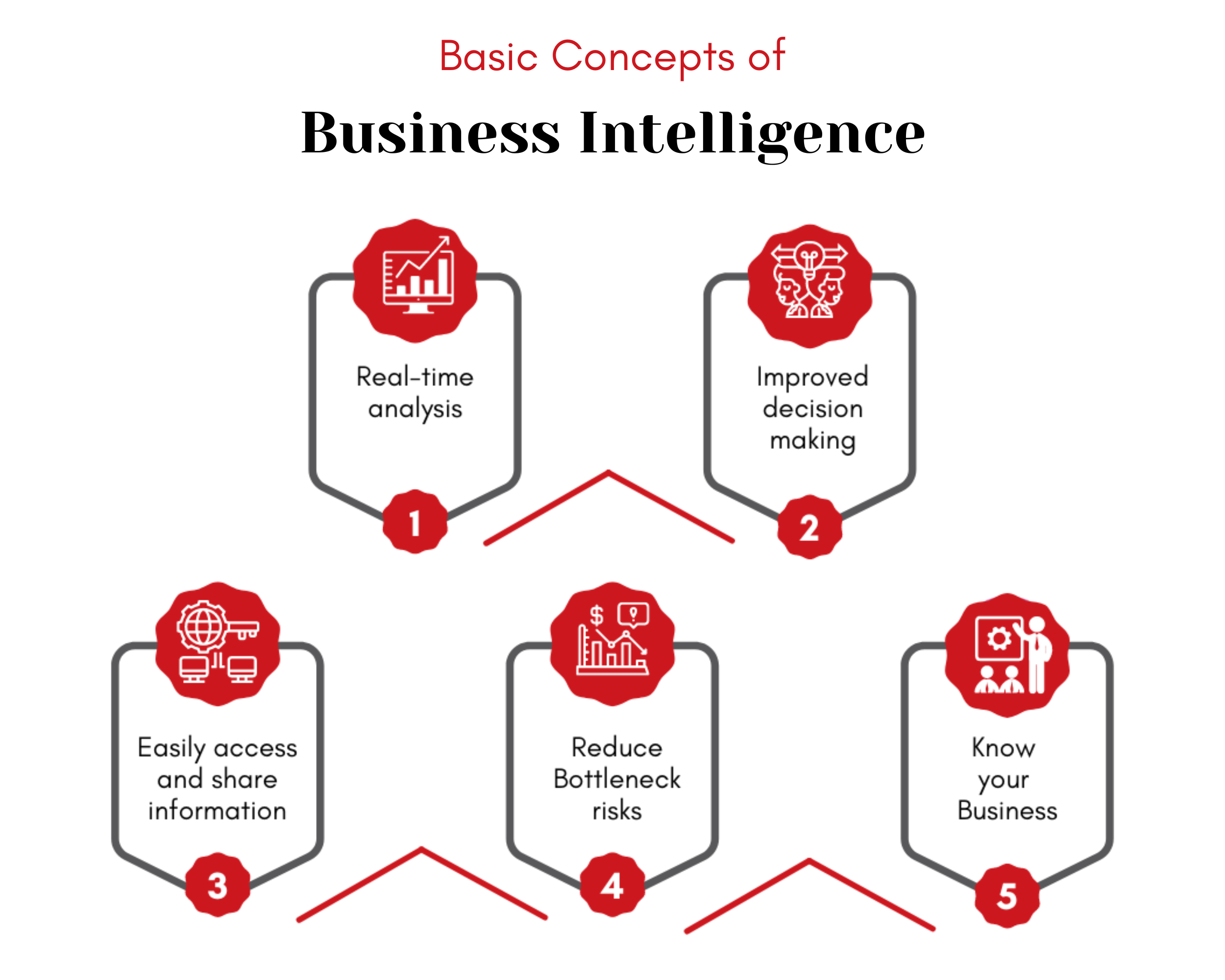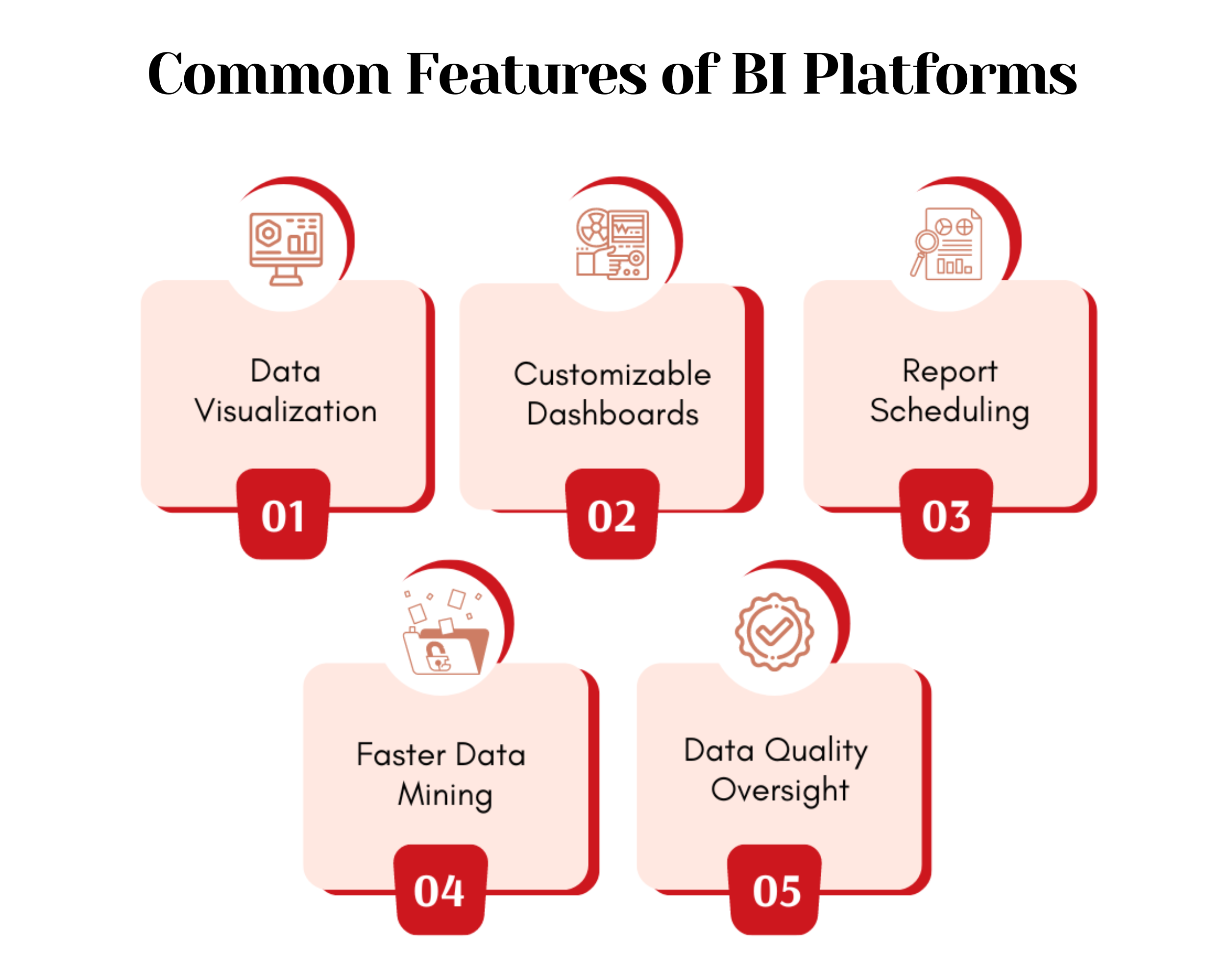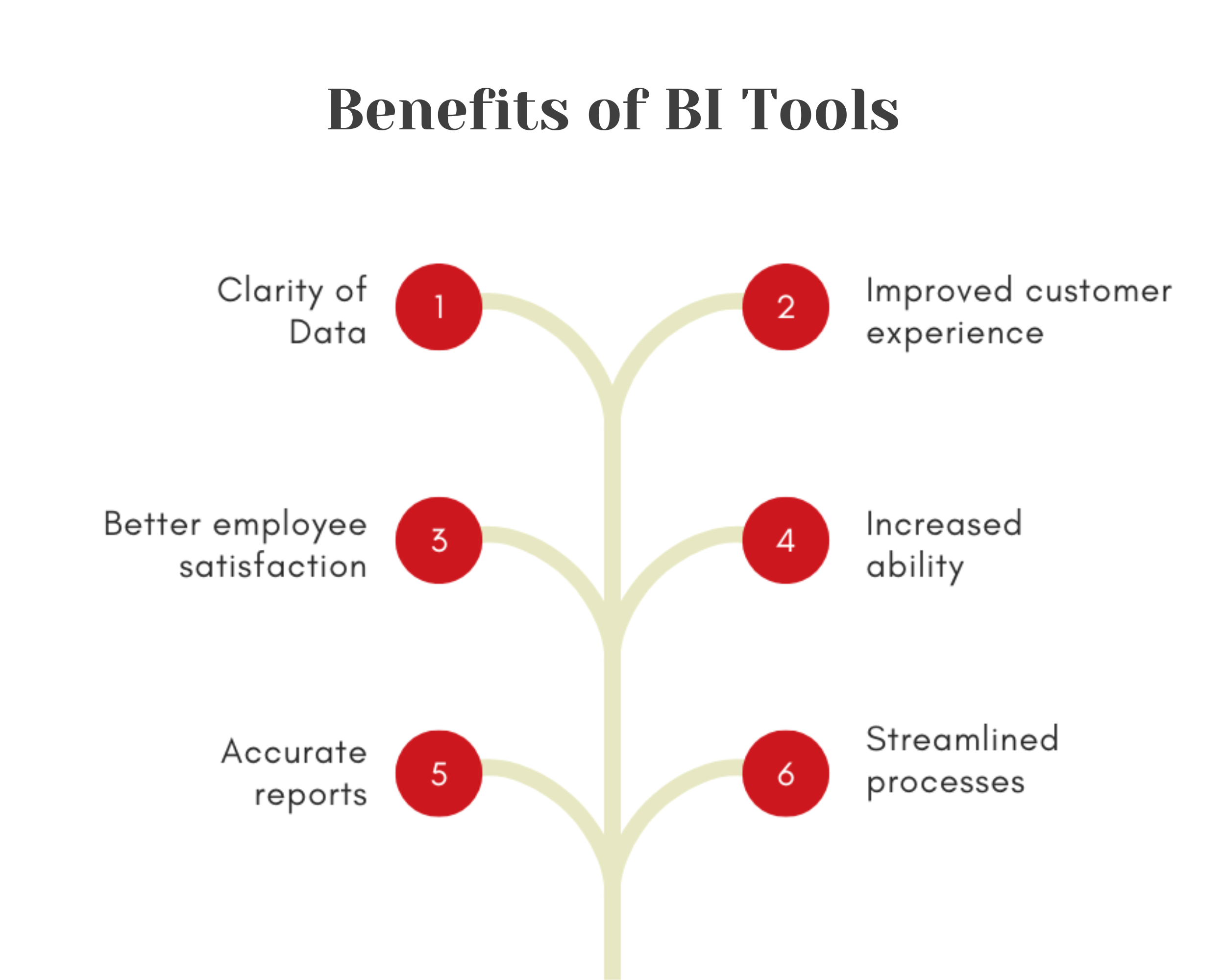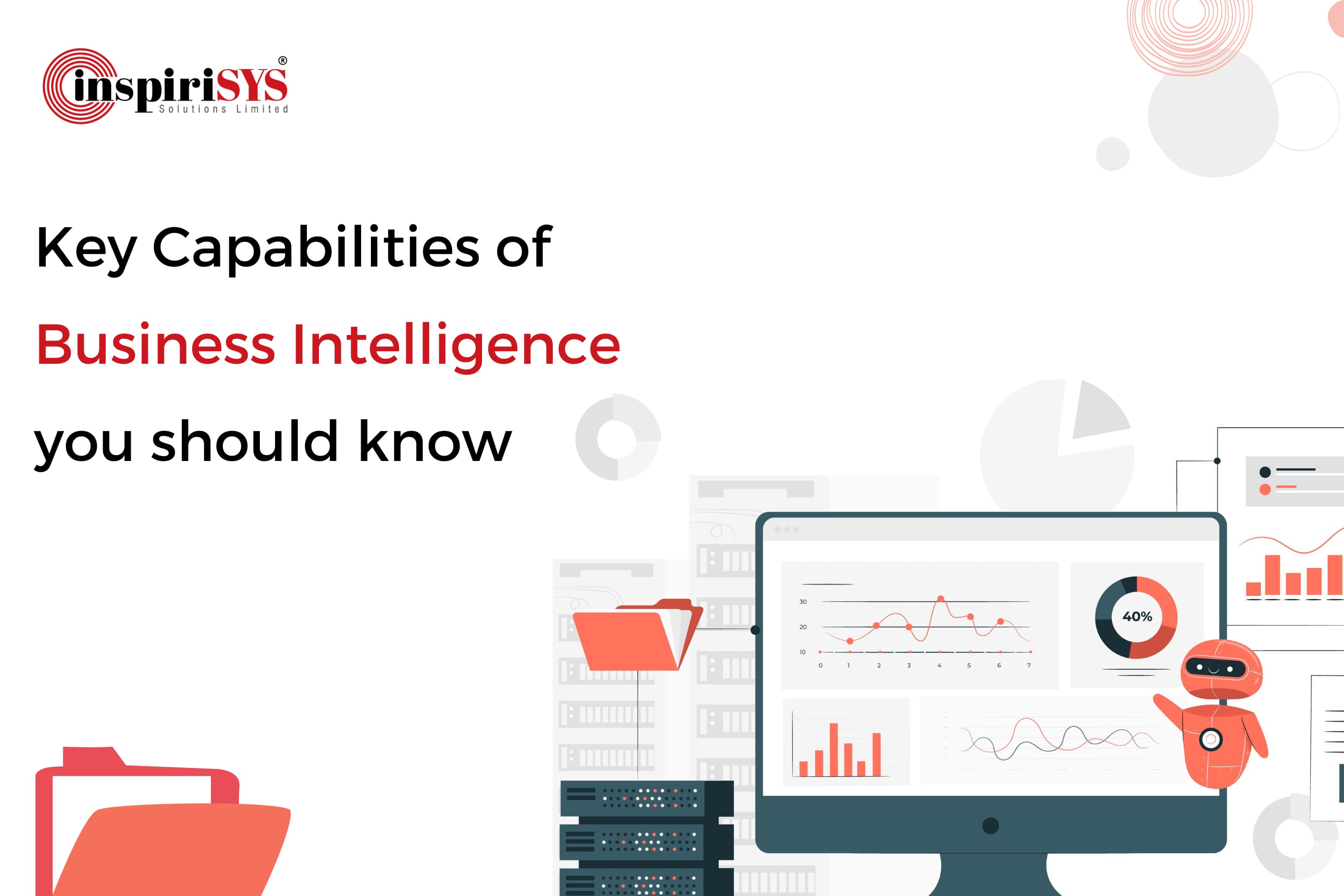The ocean of data that humankind generates every day should not get wasted; businesses are very particular about this. Every company is trying to counter the challenge of capitalizing all forms of data with intelligent software or tools for the good. Most modern technologies use data as their base resource to help companies grow at a better rate and one among them is Business Intelligence (BI). This article will give you a clear picture of how Business Intelligence can influence your business with its capabilities.
Several industries like healthcare, education, and Information technology have adopted enterprise BI to efficiently transform their operations. Companies have started to realize the potential of modern BI tools and they are trying to implement the technology for successful outcomes.
According to Statista, the Business Intelligence and analytics software application market is expected to grow and reach $18040 billion.
Business Intelligence Defined
Business intelligence is a set of practices, technologies, and tools that collects raw data from different business operations and external sources to integrate and analyze them for valuable insights. Data mining and predictive modeling are some of the advanced analytics used in BI to guess trends, identify patterns, and make a prediction about the market and demands.
With the use of BI, organizations find it easy to make informed decisions that lead to better profits. The meaningful and actionable information retrieved from the datasets can be used in various departments of business like marketing, finance, and operations. Implementation of BI requires a specialized software or platform that provides a variety of tools and features for systematic data management, visualization, and analysis.

What are BI Tools?
Business Intelligence tools are software that assists companies to collect, process, analyze, and sharply visualize data for informed decision-making. Data from an array of sources such as spreadsheets, social media platforms, and general databases are accepted and used by a BI tool for processing. Using the tool, businesses can produce interactive reports, business insights, dashboards, and analytics that can shape the way jobs are performed.
The common features of a BI tool include faster data-mining capability, performance tracking against KPIs, Natural Language Processing NLP, and data quality management. All these features help a company clearly understand a situation and react accordingly for positive business results. Some of the best BI tools in the market that comprise all top-end features are Power BI, Oracle Analytics Cloud, MicroStrategy, and Qlik Sense.

Why do you need BI Platforms?
The data-driven culture in our fast-growing world is not a surprising fact that any organization would deny. Moreover, companies need to have a clear understanding of the data they possess for moving to the next level. Business intelligence platforms with modern capabilities are the key to attaining the aforementioned. For this reason, companies should look for a capable BI platform that can produce comprehensive performance.
While simple analytics platforms can just import, clean, and forecast data BI platforms have the nature of being robust, dynamic, and adaptive to future BI strategies.

How to Choose the Best BI Platform?
If you are deciding to implement a BI platform it is important to pick the best one for successful BI strategy planning. The BI platform you choose must pull off the expected job and give valuable outputs.
The below-given are some of the key features that should be considered before selecting a BI platform.
• Built-in artificial intelligence (AI)
• Compliant with other platforms and applications
• Easy to use
• Flexible deployment
• Constant alerts about good and bad metrics
• Embedding in business applications
• Data connectivity
• Different dashboard and visualization options
Top Capabilities of Good BI Platforms

Data Preparation and Cleaning
Data is the base of all business intelligence capabilities and companies must first collect data for implementing BI. Once data is collected from various sources like legacy systems, operational CRMs, and other management information systems, BI tools start to process them.
All unstructured data are sorted and the duplicate data and mistakes are deleted to obtain clean data that can be analyzed. The BI software then creates and runs probes against data sets to extract valuable insights that are used to present data visualization. Graphs, charts, infographics, and animations are acquired as visuals to make it easy for humans to understand and take precise decisions.
Data Visualization
Analysts, executives, and other important decision-makers need a range of data visuals that are created from large quantities of unstructured data. Data visualization capabilities are very important for BI software and the variety of images, graphs, and charts that a tool can produce determines its capability. Attractive animations that are more interactive and understandable let the business professionals come to clarity about a situation which in turn helps make successful decisions.
Presenting data in the form of visuals instead of text helps humans acknowledge key points and this is where BI software comes up with creative outputs. A good BI software must be able to use a variety of elements to creatively showcase raw data and this is an important aspect you should check before you implement BI for strategies.
Cloud-based BI
Another interesting capability to expect is for a BI platform to be cloud-based. This allows you to access BI solutions from any device and this is a major convenience. Cloud-based BI is very helpful in this lively business climate that requires you to quickly access your data and extract insights. Companies must incline towards using cloud-based BI tools that should make it easy for making strategic decisions remotely.
Simply, the fast accessibility to BI applications from any place at any time by powerful people lets organizations grow better. Cloud-based BI platform hosted on a virtual network is a major quality that you must consider before choosing your BI platform.
Analytic Dashboards and Reports
This is a basic capability that impacts all business strategies built based on BI software. Massive amounts of unstructured data are smartly analyzed to bring out meaningful dashboards that simplify complex information. Organizations can examine their existing strategies and start planning on creating a new business model using visuals that give leads about the upcoming.
Tactical moves made by organizations using analytics and reports that throw light on trends and patterns are major adjustments. BI software must be more capable of processing old and current data to present predictive graphical images. The in-depth analytical dashboards and reports help in finding new opportunities and make you take more calculative business decisions.
Data Security and Protection
Data and security are two words that always come together in the current technology-based world. While BI software is very efficient at filtering, cleaning, and organizing data it is also important to keep the data safe throughout the process. Adaptive data security is a useful capability found in quality BI platforms as it limits data accessibility according to needs and protects data from outside threats.
Efforts made by security teams to keep data safe consume plenty of time and effort and this can be negotiated by an able BI software. Most BI tools allow developers to create twins of existing validation and approval models which are implemented in new BI applications for added security. This advanced data security capabilities are transforming the BI market that you must look for in the BI software when you pick.
Data Lineage Tracking
The concept of tracking data when it moves through various stages at different times from its source to the final destination is called data lineage tracking in BI. Organizations get to understand the transformation of data better with this capability of BI platforms and data lineage also helps in various other places. Having the knowledge of where data had come from and how it has been used gives clarity of what’s working right and what is not.
This capability in a BI platform can help organizations be more accurate and lets them identify and fix data-related errors that cause big trouble. Data lineage tracking is very commendable for companies that mainly handle more Big Data-related solutions. Because it cleverly identifies potential bottlenecks and finds out data flows that can be improved.
Automated Insights
An effective BI platform must have the capability to implement machine learning techniques for the automatic generation of meaningful insights. For example, the end user using the software must find it easy to access the key points in a dataset without intentionally searching for it. This is possible through automation incorporated in a BI platform and this can transform many decisions in a business.
Optimizing business processes becomes easier when BI tools start to use artificial intelligence and machine learning algorithms for extracting automated insights. Some of the automated insights companies can use in BI include descriptive insights, diagnostic insights, predictive insights, and prescriptive insights.
User-friendly
It is important for any platform or software to be more user-friendly and easy to understand and this obviously applies to BI platforms as well. Interfaces must be engaging and should make the user more interested in finding new solutions for business strategy planning.
This quality in a BI platform should be one of the top priorities as it can bring a great difference in how business show interest in strategizing their moves. High-quality usability in a BI platform ensures better access to facilities of the software and this reflects in the overall performance of the organization.
Conclusion
On one hand, companies are fairly smart about possessing data that can enhance their business while on the other hand, it is more important to know how to manage the collected data. There are different BI tools and approaches that organizations must explore to get a clear picture of the raw data that cannot be processed using normal efforts. If the intention of a data-driven business is to grow with good performance, there must be no second thoughts about implementing BI for strategizing.
We at Inspirisys provide top-quality BI and analytics offerings that can guide you to take the next step in your business with caution and stability.
Get to know more about the BI & Data Analytics offerings that could probably be the service you are looking for.
Frequently Asked Questions
What is business intelligence and analytics?
Business intelligence (BI) refers to the technologies, processes, and practices used to analyze and transform data into actionable insights that inform decision-making. BI helps organizations to better understand their operations, customers, and markets, and make more informed, data-driven decisions.
Analytics is a term that is often used in conjunction with BI. It refers to the systematic examination of data or statistics in order to understand and gain insights into a particular subject or issue
What is business intelligence and analytics?
Business intelligence (BI) refers to the technologies, processes, and practices used to analyze and transform data into actionable insights that inform decision-making. BI helps organizations to better understand their operations, customers, and markets, and make more informed, data-driven decisions.
Analytics is a term that is often used in conjunction with BI. It refers to the systematic examination of data or statistics in order to understand and gain insights into a particular subject or issue
What are the key advantages of using BI systems?
While there are several advantages to using BI systems, here are some of the main advantages you should know.
- Improved decision-making: BI helps organizations to make more informed, data-driven decisions by providing access to accurate, up-to-date information and analysis.
- Greater efficiency: BI can help organizations to streamline processes and improve efficiency by providing insights into areas where improvements can be made.
- Risk management: BI can help organizations identify and mitigate potential risks by providing insights into potential problems or challenges.
How to implement modern business intelligence?
The simple steps to implement modern business intelligence software are as follows.
- Step 1: Identify business needs
- Step 2: Gather requirements
- Step 3: Pick the right BI platform
- Step 4: Set up the selected BI platform
- Step 5: Let users get trained
- Step 6: Maintain the system and monitor continuously.







